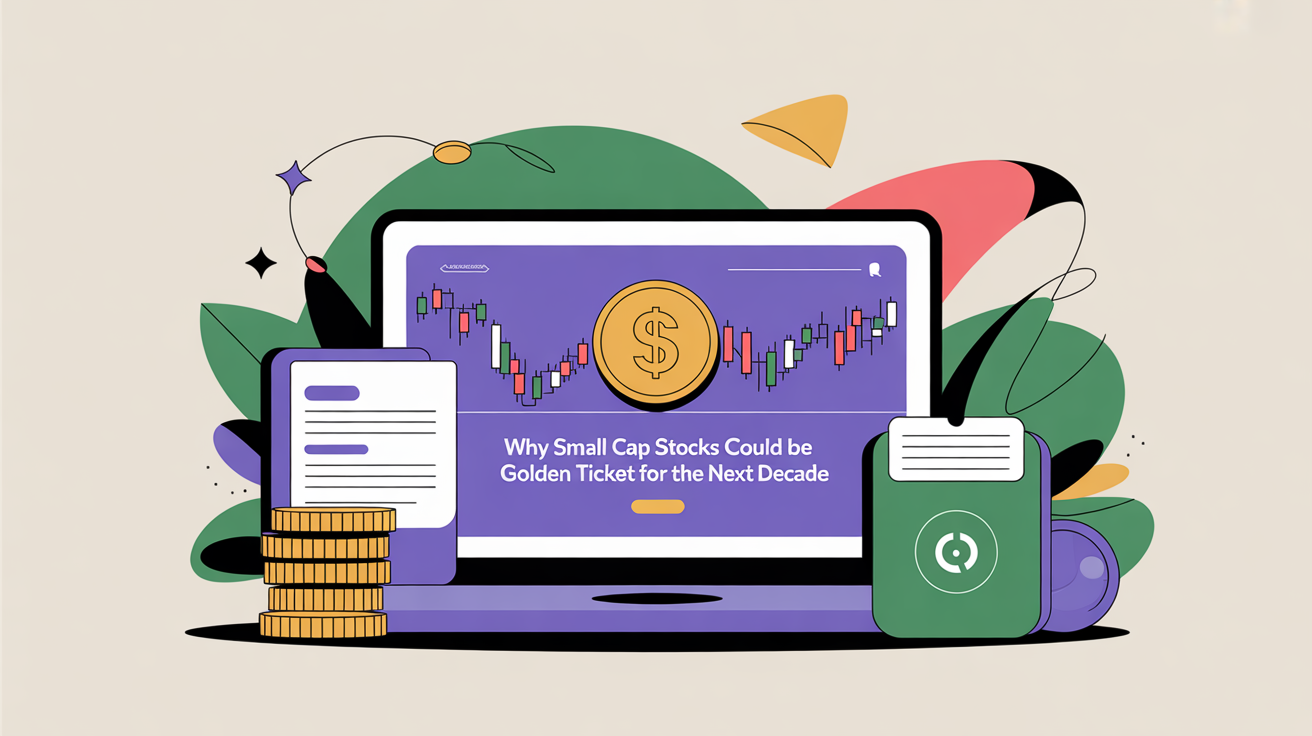Why Small Cap Stocks Could Be Your Golden Ticket for the Next Decade
If you’re a long-term investor with patience and an appetite for growth, small cap stocks might just be the hidden gem you’ve been overlooking. These companies, typically valued between $300 million and $2 billion, are like saplings in a forest of redwoods—small today, but with the potential to dominate the canopy tomorrow. Over the past 50 years, small caps have outperformed large caps by an average of 2% annually, according to data from Ibbotson Associates. But here’s the kicker: the next 10 years could be even more transformative. With innovation accelerating in sectors like healthcare, clean energy, and AI, small caps are uniquely positioned to ride these waves. Let’s dive into why this corner of the market deserves a spot in your portfolio—and how to pick the winners.
The Case for Small Caps in a Long-Term Portfolio
Historical Performance: Small Caps Shine Over Time
The Russell 2000 Index (IWM), which tracks small cap stocks, has delivered an average annual return of 9.7% since its inception in 1984. Compare that to the S&P 500’s 10.2%, and the gap seems narrow—until you factor in the explosive growth phases. For example, from 2000 to 2010, small caps trounced large caps by over 80%. Why? Smaller companies are nimbler, often operate in niche markets, and can scale rapidly once they hit their stride. Plus, they’re less covered by analysts, which means more opportunities for undervalued gems.
The Innovation Advantage
Small caps are where disruption happens. Think of companies like DexCom (now a large cap), which revolutionized glucose monitoring—it was a small cap just 10 years ago. Today, sectors like quantum computing, mRNA therapeutics, and renewable energy storage are brimming with small-cap innovators. A 2023 McKinsey report found that 60% of breakthrough patents in the last decade came from companies with under $1 billion in revenue.
Economic Tailwinds
Post-pandemic shifts—like reshoring supply chains and federal incentives for clean tech—are creating fertile ground for small caps. The CHIPS Act alone has funneled $52 billion into U.S. semiconductor manufacturing, a sector where many small-cap suppliers operate. Meanwhile, aging populations are driving demand for healthcare solutions, another small-cap sweet spot.
How to Identify Winning Small Caps: A 3-Part Framework
1. Financial Health: The Bedrock of Survival
Look for companies with strong balance sheets: low debt-to-equity ratios (<25%), positive free cash flow, and rising gross margins. For example, Enviva Partners (EVA), a renewable energy stock, maintained a debt-to-EBITDA ratio below 3x even during the 2022 market slump, giving it flexibility to invest in growth.
2. Market Position: Dominating a Niche
Winners often control a specialized market. Take Axonics (AXNX), a small cap in the neuromodulation device space. It holds 70% market share in sacral nerve stimulation—a niche but growing $1.2 billion market—and has consistently stolen share from giants like Medtronic.
3. Management With Skin in the Game
Founder-led companies tend to outperform. A 2022 Harvard study found that small caps with founder-CEOs delivered 31% higher returns over a decade than those with hired executives. Case in point: Proto Labs (PRLB), still led by its founder, has grown revenue at a 12% CAGR since 2013.
Top Small Cap Stocks to Watch for the Next 10 Years
Here are three companies that check all the boxes—plus one ETF for broad exposure:
1. Beam Therapeutics (BEAM)
This gene-editing pioneer is leveraging CRISPR 2.0 technology to develop precision therapies for diseases like sickle cell anemia. With $1.1 billion in cash and partnerships with Pfizer and Apellis, Beam has the runway to innovate.
2. Shoals Technologies (SHLS)
A leader in solar energy components, Shoals’ “plug-and-play” systems reduce installation costs by 20%. As solar capacity grows at a 15% CAGR (per BloombergNEF), Shoals’ $2.2 billion backlog positions it for multi-year growth.
3. IWM: The Russell 2000 ETF
For diversified exposure, IWM holds 2,000 small caps across sectors. While it won’t match the upside of individual stocks, it mitigates risk—a smart anchor for a long-term portfolio.
| Stock | Market Cap | Sector | 5-Year Revenue CAGR | Debt-to-Equity |
|---|---|---|---|---|
| BEAM | $3.1B | Biotech | 62% | 0.08 |
| SHLS | $2.4B | Clean Energy | 34% | 0.12 |
| IWM | N/A | Diversified | 8% | N/A |
Risks and How to Mitigate Them
Small caps aren’t for the faint of heart. Volatility is higher—the Russell 2000’s beta is 1.2 vs. the S&P’s 1.0—and liquidity can dry up in downturns. To manage risk:
- Diversify: No single stock should exceed 5% of your portfolio.
- Focus on sectors with tailwinds: Healthcare, energy transition, and AI infrastructure are safer bets than, say, consumer discretionary.
- Use dollar-cost averaging: Invest fixed amounts monthly to smooth out price swings.
| Risk Factor | Small Caps | Large Caps |
|---|---|---|
| Average Volatility (Beta) | 1.2 | 1.0 |
| Liquidity (Avg. Daily Volume) | 500K shares | 10M+ shares |
| Recession Drawdown (Avg.) | -45% | -35% |
Building Your Small Cap Strategy
Start by allocating 10-20% of your portfolio to small caps, depending on your risk tolerance. Combine individual picks with IWM for balance. Reinvest dividends—small caps plow back 70% of profits into growth vs. large caps’ 50% (J.P. Morgan data)—and review holdings quarterly. Patience is key: it took Amazon 14 years to go from small cap to mega-cap.
Final Thoughts: Think Big, Start Small
The next decade’s Amazon or Tesla is likely a small cap today. By focusing on financial strength, niche dominance, and visionary leadership, you can spot these disruptors early. Yes, the ride will be bumpy, but for investors with a 10-year horizon, the rewards could be life-changing. Ready to dive deeper? Explore our daily blog posts for the latest analysis—because in the world of small caps, tomorrow’s winners are hiding in plain sight.


Leave a Reply